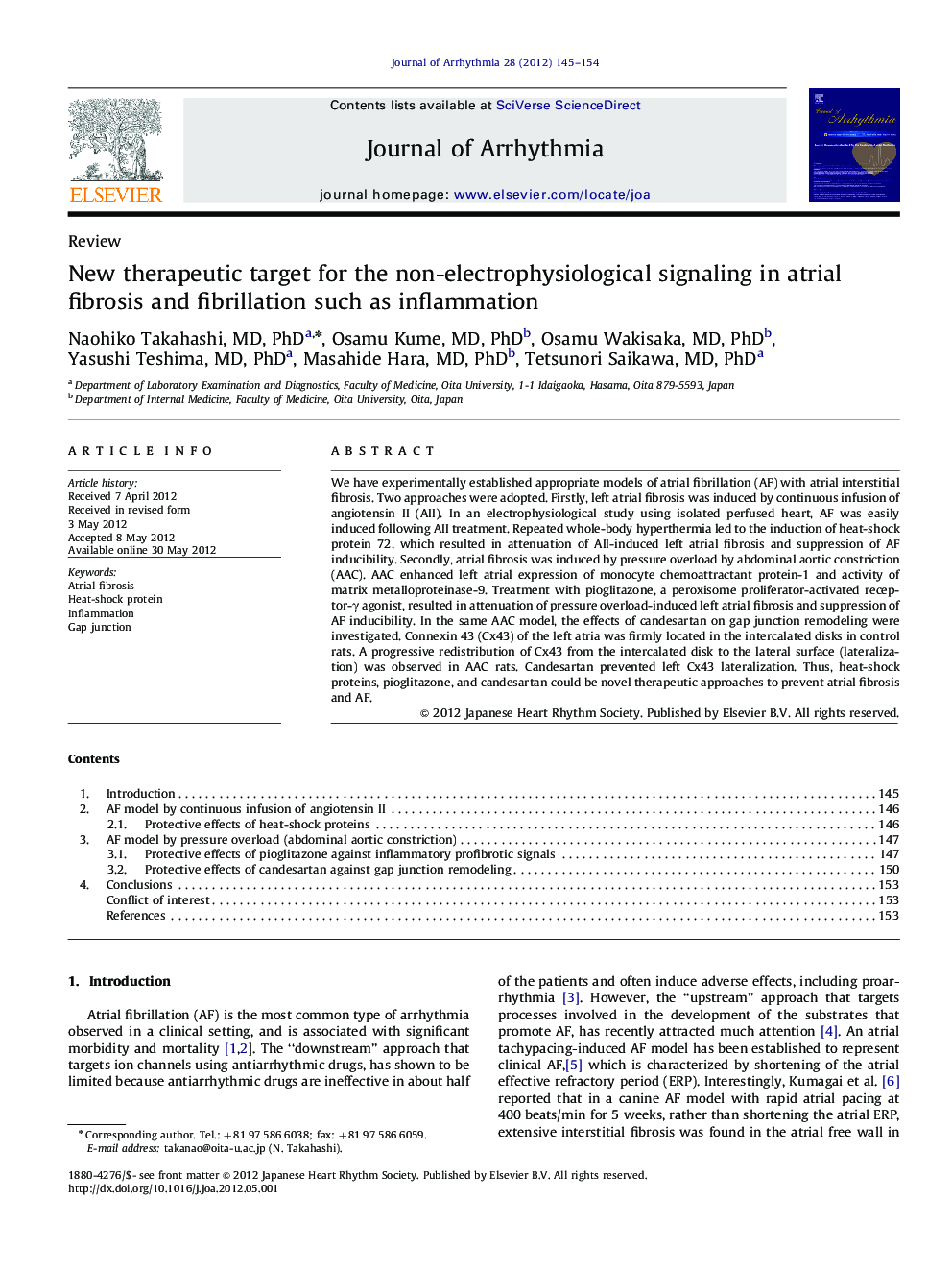| Article ID | Journal | Published Year | Pages | File Type |
|---|---|---|---|---|
| 2957771 | Journal of Arrhythmia | 2012 | 10 Pages |
We have experimentally established appropriate models of atrial fibrillation (AF) with atrial interstitial fibrosis. Two approaches were adopted. Firstly, left atrial fibrosis was induced by continuous infusion of angiotensin II (AII). In an electrophysiological study using isolated perfused heart, AF was easily induced following AII treatment. Repeated whole-body hyperthermia led to the induction of heat-shock protein 72, which resulted in attenuation of AII-induced left atrial fibrosis and suppression of AF inducibility. Secondly, atrial fibrosis was induced by pressure overload by abdominal aortic constriction (AAC). AAC enhanced left atrial expression of monocyte chemoattractant protein-1 and activity of matrix metalloproteinase-9. Treatment with pioglitazone, a peroxisome proliferator-activated receptor-γ agonist, resulted in attenuation of pressure overload-induced left atrial fibrosis and suppression of AF inducibility. In the same AAC model, the effects of candesartan on gap junction remodeling were investigated. Connexin 43 (Cx43) of the left atria was firmly located in the intercalated disks in control rats. A progressive redistribution of Cx43 from the intercalated disk to the lateral surface (lateralization) was observed in AAC rats. Candesartan prevented left Cx43 lateralization. Thus, heat-shock proteins, pioglitazone, and candesartan could be novel therapeutic approaches to prevent atrial fibrosis and AF.
